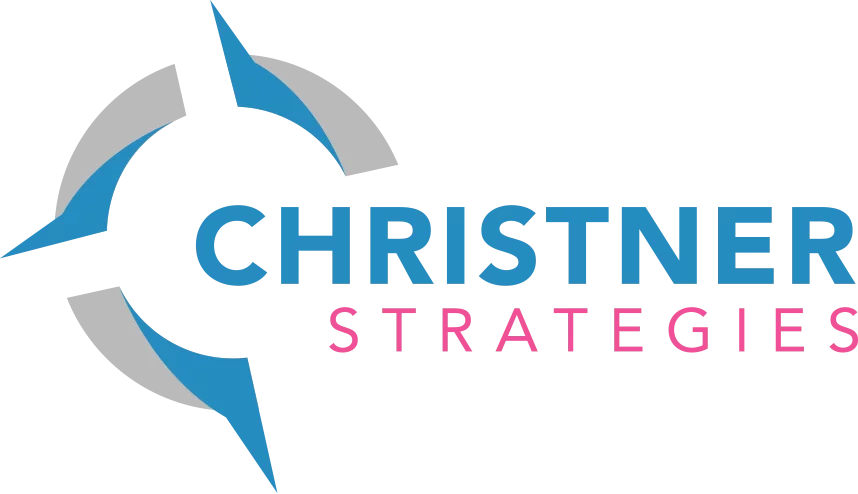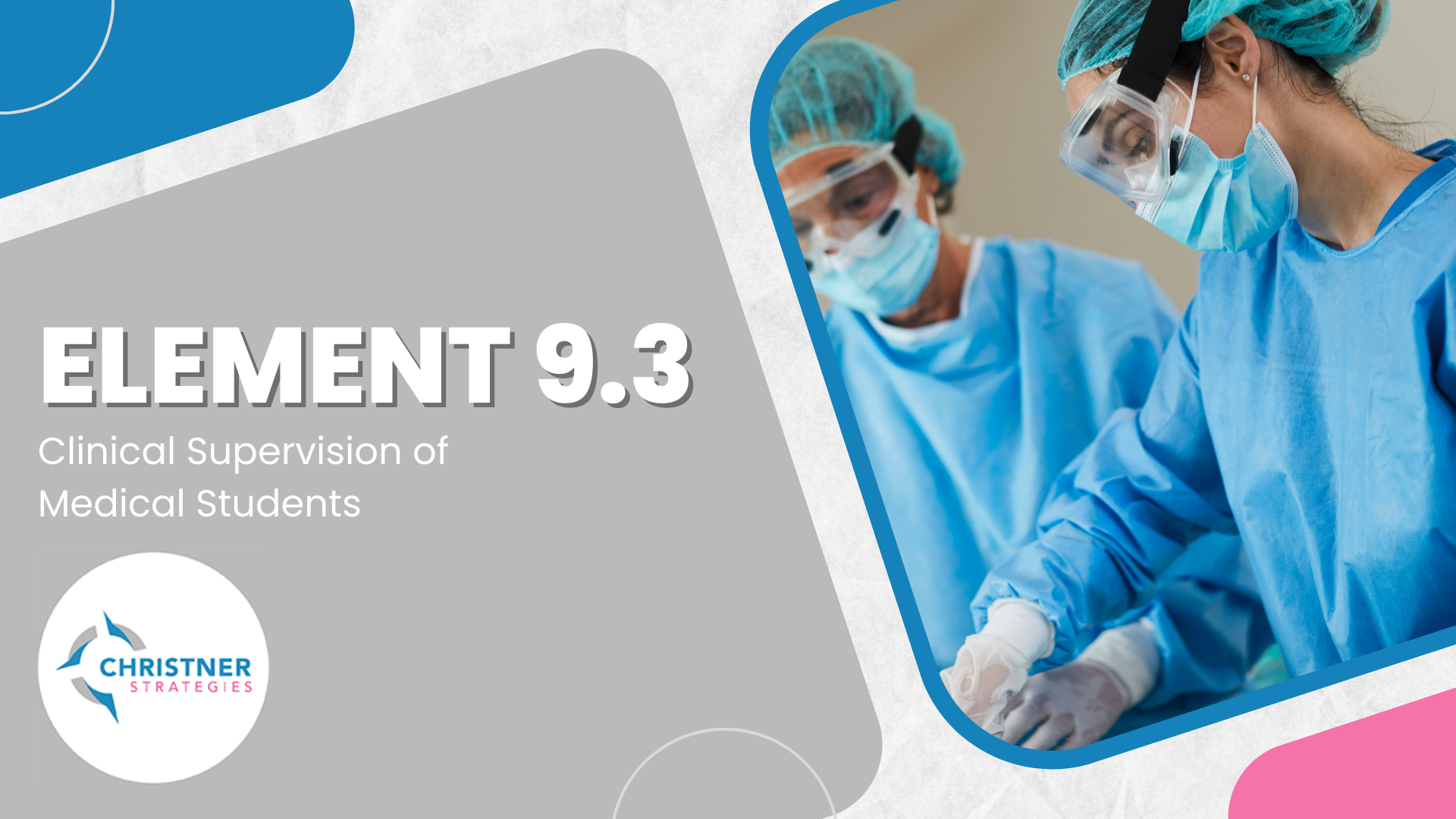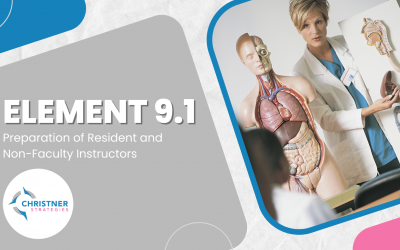LCME Element 9.3 – Clinical Supervision of Medical Students
A medical school ensures that medical students in clinical learning situations involving patient care are appropriately supervised at all times in order to ensure patient and student safety, that the level of responsibility delegated to the student is appropriate to the student’s level of training, and that the activities supervised are within the scope of practice of the supervising health professional.
Hidden Curriculum
Element 9.3 is about patient and student safety. Full stop. Its purpose is to establish clear boundaries around what physicians and other healthcare professionals can expect from students’ knowledge, skills, and performance in required and elective clinical experiences. The element also sets expectations for students who may be over eager to participate despite novice capabilities. The intent of the element is clear-cut, but circumstances in the clinical environment can be nuanced and complex. Programs must consider innumerable clinical scenarios while balancing the need for student learning, often demanding written guidelines that leave no room for ambiguity (perfect segue to Best Practices).
Best Practices
While the 2024-25 DCI removed the requirement to append an associated set of guidelines, it is still a best practice to create a policy that very clearly articulates the appropriate levels of physician supervision and student responsibilities. It may be of value to create a draft that is reviewed by the compliance office. The policy must define who is qualified to supervise a student (e.g., physician and resident), including addressing the roles of other licensed professionals (e.g., physician assistant, nurse practitioner). Additionally, the policy should define the levels of supervision, such as direct and indirect. Nearly all clinical responsibilities fall within the scope of direct supervision, requiring the physician to be physically present and provide immediate instruction. On the other hand, students may independently perform a history and physical where the physician is readily available and verifies the student work, but is not in the same room. This scenario would qualify as indirect supervision and supports professional growth. Finally, written guidelines should specify the course director’s role in communicating and adhering to expectations since they serve as a bridge between program, students, and clinical settings.
Broadcast the written guidelines widely and frequently. The DCI asks schools to elaborate on how physicians and students learn about and understand expectations. An annual acknowledgement is a baseline method, but it may not ensure that all parties retain the information. Think about the different segments who play a role in clinical supervision and how to best reach them. Examples include recaps at every course orientation for students; published policies on a website and in learning management systems; electronic and verbal reminders from course directors to colleagues; and onboarding materials for new/adjunct faculty and residents. Healthcare systems are large, distributed, and complex organizations, so err on the side of overcommunication.
Continuous Quality Improvement
The DCI requires schools to explain the mechanisms for students to express any concerns about the adequacy and availability of supervision in the clinical environment, and the response to this question lays the foundation for CQI. Programs must include a standard question on student feedback forms for rotations or courses inquiring about the level and appropriateness of clinical supervision. Pro tip: the ISA includes a question on the adequacy of clinical supervision, the results of which are displayed in a DCI table. For purposes of data triangulation and longitudinal evaluation, use the same language and scale on student feedback forms. Additionally, a school must establish other, more immediate mechanisms for students to report concerns about clinical supervision. Students should know who by name to contact with concerns (e.g., course director or deans for clinical education and student affairs) since pressure to perform a clinical duty outside the scope of responsibility could represent a learning environment violation.
The DCI also requires schools to elaborate on the frequency for reviewing and acting upon these data. The response to this DCI question is essentially CQI. Course evaluations must include these data from student feedback forms by clinical site and campus to support targeted responses. De-identified, aggregated data on student mistreatment where the nature of complaint is related to pressure to perform out-of-scope duties is another source of information that must be tracked and acted upon. As always, collecting and passively reviewing data is not sufficient. If there are patterns or issues, be prepared to explain how the program took corrective action.




0 Comments